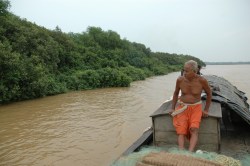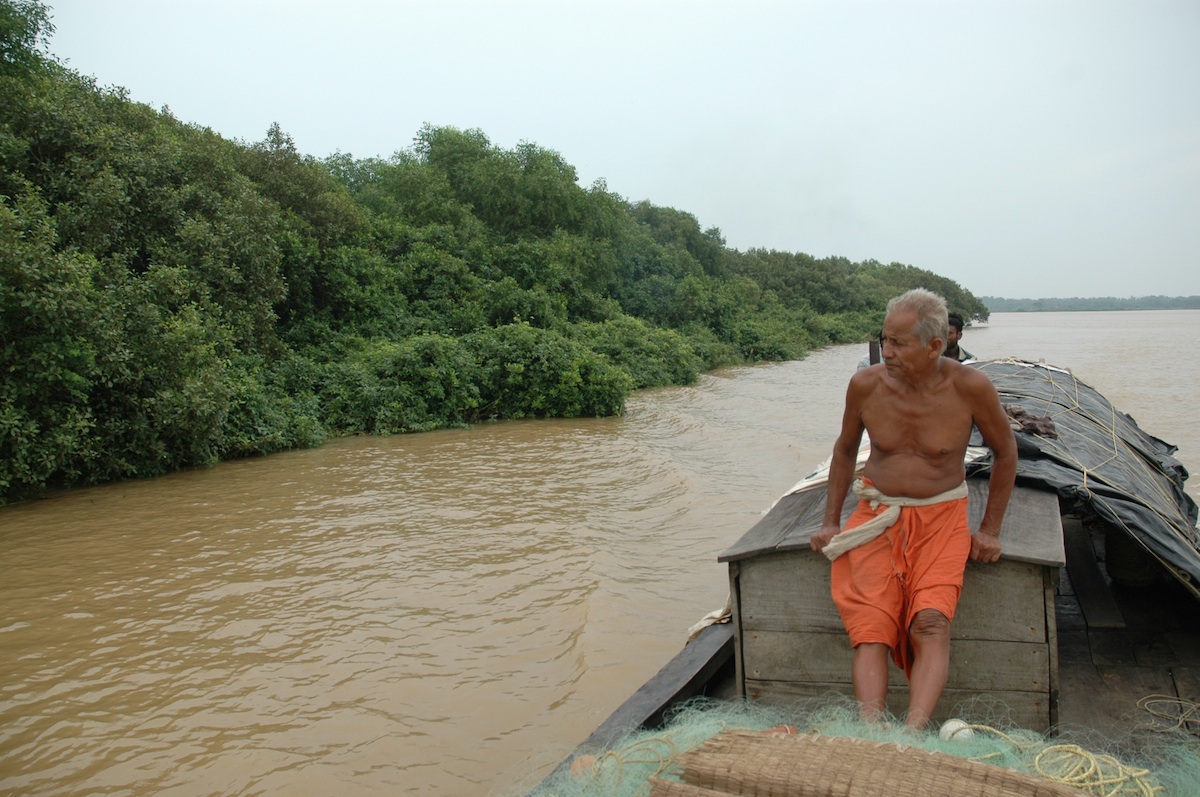
Kumar Sambhav Shrivastava / Down to EarthA Praharajpur fisherman sails past mangroves in the weeks before the cyclone hit.
Sometimes the best way of being protected from nature is by protecting nature itself — and a small coastal village in India is proof of it.
As Cyclone Phailin rose from the Bay of Bengal over the weekend, bringing gales and floods to India that killed 27, residents of Praharajpur did the sensible thing and got the hell out of dodge. As the villagers returned home, they discovered that a restored mangrove plantation helped shelter their vulnerable village from the storm’s wrath.
About 40 of the village’s 200 homes were damaged, but residents told Down to Earth that it would have been worse without the mangrove. “In the nearby Sundrikhal and Pentha village, most of the houses have been washed away,” villager Ravindra Behera told the Indian environmental magazine. “We are better off because the forest has taken the initial brunt of the storm.” From the article:
“Our elders had made an embankment along the coast to prevent soil erosion in 1975. They randomly planted mangrove trees on the embankment. Gradually, this plantation converted into a mangrove forest. However, it was during the 1982 cyclone that we realized that mangrove can also prevent the storm from reaching us,” said Balram Biswal, another resident.
Thereafter, the villagers aggressively started planting mangroves on the island and also made provisions in the village to protect the forests. “We constituted a 15-member forest protection committee from among the villagers. The body penalised anyone who damaged the forests in any possible way and a night guard was appointed and paid Rs 100 per night to protect the mangrove,” said Behera.
Today, a dense forest of tall mangrove trees stands between the sea and Praharajpur. Apart from a shield from cyclone, the residents also get wood, honey and fruits from the mangrove. “The story of Praharajpur has also inspired nearby villages to plant and protect mangroves coasts. We hope that the forest comes to their rescue as well,” said Suresh Bisoyi of non-profit Regional Centre for Development Cooperation (RCDC).
Scientists and village survivors alike tell us that mangroves and other coastal ecosystems can shield our cities and towns from rising seas and storm surges. Here’s hoping that coastal governors in the U.S. are paying attention, too.



